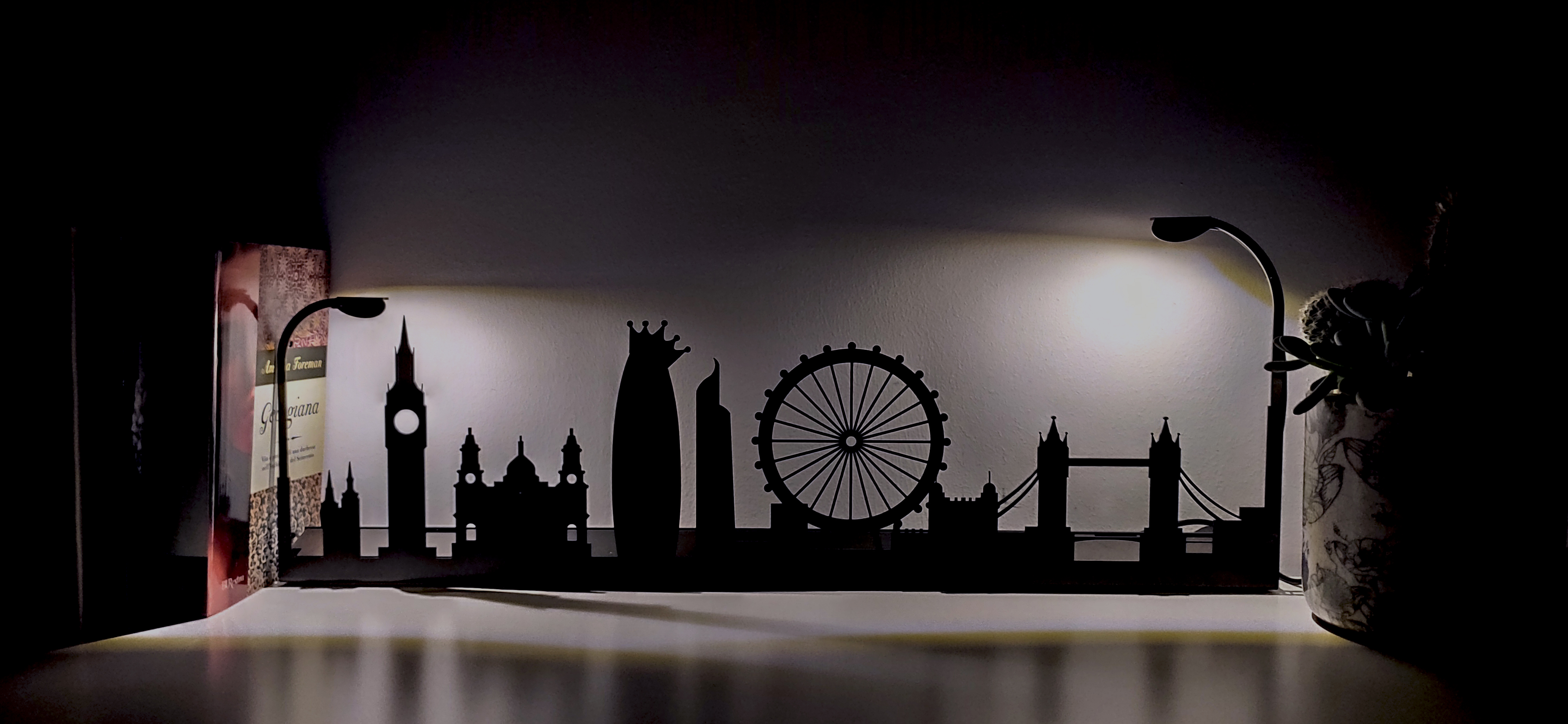Saint Ambrose's Day in Milan and beyond
Saint Ambrose's Day is coming, and for the occasion we would like to remember through Skylight, New Lights on Milan a detail on the history of this city that is not always popular, but is particularly interesting and deep: lighting.

In the chiseled contours of this design object you can notice, at the ends of the buildings, towers, palaces and historical places that architecturally represent the changes and routes, two street lamps placed to illuminate the skyline of the Ambrosian center: warm white LED lighting, DC 5V to highlight the outline of the spires and shapes even at night.
But let us go back a bit, to Milan in 1784. In the Habsburg city, under Austro-Hungarian rule, Emperor Joseph II found the funds to start night-time lighting for the first time. For decades, however, the system seemed a bit shaky: it could still be better, it needed improvements. Streetlights appeared for the first time in Paris in 1825: years in which Milan was lit, neighborhood by neighborhood, by its inhabitants, with iron lanterns with candles. Then the turning point: once they arrived, the streetlights were overwhelming: 1158, of which 223 were made of tin and 935 were made of copper; but, despite the quantity, the quality was still precarious: the brightness was still dim and precarious, so much so that matches were used to read the names of the streets. However, in 1845, Mediolanum began to be lit by city gas, with the distillation of coal. Oil lamps persist, but are gradually decreasing. It is in the 20th century that electricity lights up with its own twist: AEM, which also inherits lighting from private individuals. In 1922, just after the Great War, in Milan there are still 2722 gas lamps, but the electric ones already reach 6161. The Duomo, Central Station and Sforza Castle are illuminated by AEM.

It is no coincidence that the TGroup Skylight project dedicated to Rome, Milan, New York, London and Paris is nicknamed New Lights on the City: lighting is a fundamental part of these urban centers. Just think of the Roman lighting of Castel Sant'Angelo, a panorama known throughout the world, or the fact that Paris is still nicknamed La Ville Lumiére, both in a physical sense because, as mentioned above, it was among the first capitals to benefit from avant-garde lighting, and in a figurative sense, because it is clear that the Enlightenment is also what led to the Enlightenment, the triumph of reason, the birth of the bourgeoisie, the French Revolution.

Or the spectral lights of London that keep the Thames alive, with its slightly modern and partly Gothic architecture. And New York is no exception, because this autumnal Big Apple was under the spotlight of Cinema for a large part of the second half of the 20th century. Therefore we all remember it for its nightlife that is a bit thriller, a bit detective story, between electrifying and characteristic neighborhoods, futuristic skyscrapers and police stations: for better or for worse, a prismatic city with a thousand emotions.
